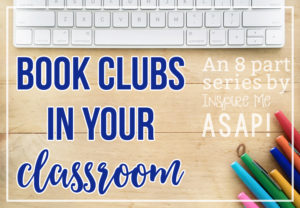
This is my third post in my eight post series about implementing book clubs into your classroom. Last week, I wrote about the Benefits of Book Clubs, which you can read more about HERE. Today, I am writing specifically about matching books to readers during book clubs.
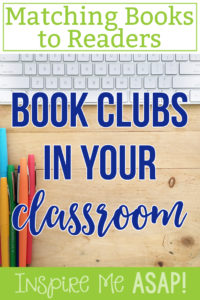
When implementing book clubs with your readers, you will want to keep two key components in mind: student choice and just-right book selection.
When I start a new round of book clubs, I first think about the unit of study for my reading workshop unit. For example, if I am teaching a unit about informational text features, then I will use a variety of different informational text books with my book clubs. I spend time gathering multiple texts on the same topic, such as tornadoes, whales, basketball, ect. These books will provide excellent examples of informational text features and extend my mini-lessons.
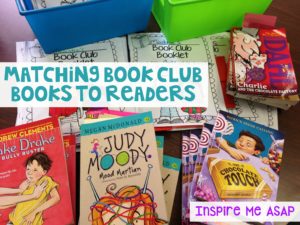
If I starting a unit with the focus begin on strong main characters and their journey throughout the story, then I will select a variety of different fiction books with a strong main character. If I am teaching a poetry unit, then I would different examples of poetry. If I am teaching about the characteristics of mysteries, then I would gather multiple copies of mystery books at varying reading levels. If I am teaching a biography unit for my reading workshop, then I would gather multiple copies of biographies at varying reading levels. You get the idea…
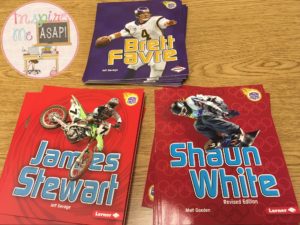
For the focus of this post, I will use the fiction genre with strong main characters as my example. The reading workshop unit was about analyzing characters. Keep in mind that you are looking for HIGH-QUALITY books that will **GRAB** the interests of your students. YOU know your students best. You know their reading behaviors, patterns, levels, stamina, and interests. Keeping this in mind as you gather multiple copy books will absolutely ensure that you will increase motivation and engagement for your book club groups. Although it does take time to gather multiple copy books, the planning will be worth it. I keep my students with their book club groups for at least one month- most likely two months. I really want to teach my students to stay with a book, long after it is over. (More on that later!)
Since I was using Because of Winn-Dixie for my read-aloud, I wanted the characters in the book club books to resemble the struggles and victories of Opal. I searched my school’s book room and also visited my local library to find excellent examples of fiction books of multiple reading levels. (This post is not about gathering enough same-copy books! If you are looking for ways to find multiple copies of books, check out the ideas I wrote about in the blog post HERE.)
Using my handy dandy reading binder, I look at the list of my reading groups, which lists the instructional level of my students. (To protect the privacy of my students, the names have been changed from the picture below.) For book club groups, I usually choose books that match the students’ independent reading level. However, to be honest….I do not get too caught up on the exact level of my students and the exact level of the book. As I mentioned in the previous posts, there are ways that you can support your readers and also ways that readers can support each other. What I *really* want to focus on is the student choice. Student choice = student engagement. :)
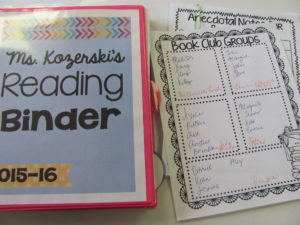
Below is a snapshot of some of the multiple copy books that I pulled from my book room and the local library. Although they are all fiction chapter books and “look” the same, they are actually a variety of Fountas and Pinnell reading levels. One challenge I have is finding multiple copy books that are the same genre as the mentor text. For example, if Because of Winn-Dixie is realistic fiction, then ideally all my books for my book club groups would also be realistic fiction. (You will notice that some of the books in this picture are NOT realistic fiction.) Even though not all the books were realistic fiction, the books each group selected had a strong main character. As I taught about the character traits of Opal in Because of Winn-Dixie, the book club members identified character traits of their main character. As I taught about the impact secondary characters have on the main character’s journey, then the book club members talked about how the secondary characters in their books impacted the main character’s journey.
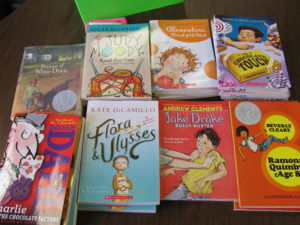
I spend one day giving a brief book talk on each book. Not only does this pump their excitement even more, but it also gives me an excellent opportunity to explicitly model my thinking aloud of how to choose a just-right book. I teach this as part of my reading workshop mini-lessons at the beginning of the year, but it is always a nice refresher. :)
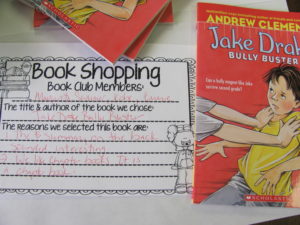
After introducing all the books, I then have my book club groups shop for their book, one group at a time. Now depending on the amount of books you have, you may want to have your students write down their “top 3” books on their book ballot. If you are fortunate enough to not worry about the amount of books, then you can just have your students write down their #1 top choice on their book ballot. (You need to make sure you have enough books in the event of more than one group choosing the same book. This happened with my group this year, and it was not a problem. I had two groups who choose The Chocoate Touch. Since there were enough copies of the book (there was a class set of 28 in our school’s book room), both groups were able to read that book without a problem.
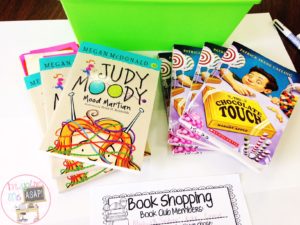
I meet briefly with each group and confirm that their book selection was a great choice. If for whatever reason the group did not choose an appropriate book, for example maybe my Fountas and Pinnell level L /M group selected Charlie and the Chocolate Factory, then I gently intervene by giving them their second or third choice. (Yet another benefit to have your groups select their top THREE choices!) However, I am VERY careful with how I word this. I very animated and dramatic as I announce the books of each group, expressing what a **GIFT** their group has been given with their book.

Below is an example of my book club groups look like after they selected their books. Below the group, I wrote one reason why the selected the book, as stated on their book shopping slip.
Group One: The Chocolate Touch (Fountas and Pinnell level N)
“The main character, John, really likes chocolate. So do we!”
Group Two: Judy Moody Mood Martian (Fountas and Pinnell level M)
“We already read Judy Moody Saves the World and liked it. We want to read another book with Judy Moody.”
Group Three: Charlie and the Chocolate Factory (Fountas and Pinnell level R)
“Our reading goal is to read more chapter books. This is a chapter book that looks interesting.”
Group Four: Jake Drake Bully Buster (Fountas and Pinnell level O)
“The book summary sounds like something we are interested in. We think this is a good level for us.”
Group Five: The Chocolate Touch (Fountas and Pinnell level N)
“After we read the summary, we thought it sounded interesting. It looks like it is a book that is just right for us.”
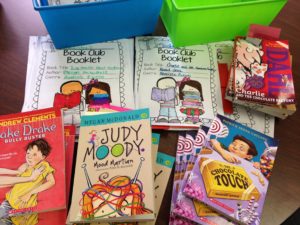
Once book club group members choose their book club books, then you are ready to begin! In my next post, I will explain how I teach book club expectations and hold my students accountable for their work in their group. If you asked a question in a previous post, I promise I will answer it in the post that best fits the explanation! :) Feel free to ask me any questions by commenting below.

Chapter One: Introduction to book clubs
Chapter Two: Benefits of book clubs
Chapter Three: Matching books to readers
Chapter Four: Book club expectations
Chapter Five: Accountability with book club members
Chapter Six: Student-led conversations in book clubs
Chapter Seven: Role of the teacher in book clubs
Chapter Eight: Using assessments in book clubs
What benefits do YOU see when your students are working in a book club? I would love to hear from you! Also, please feel free to email me or write a comment with your question. I will address all questions throughout my blog post series on book clubs.
Looking for a resource to help you implement book clubs in your classroom?
Check out my resource below:
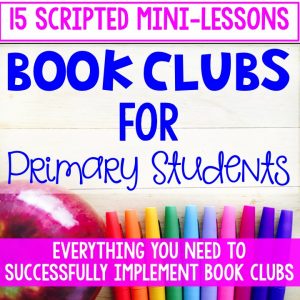
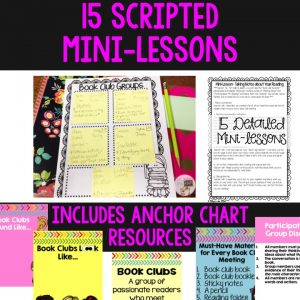
Looking for an engaging and sure-fire way to motivate your readers? This 107 page file has everything you need to know in order to effectively implement a book clubs with your rockin’ readers, while meeting the CCSS for Speaking and Listening.
There are 15 mini-lessons that are included in this file, which focus on establishing routines and setting expectations for book clubs with your students.
Mini-lessons include:
Detailed lesson plans
Colorful posters for you to print for your anchor charts
Reproducibles for your students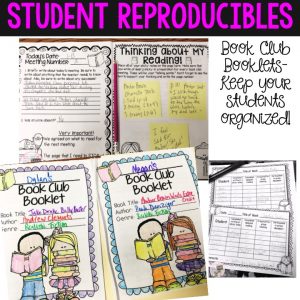
During this unit, readers will learn to:
-Define book clubs and understand its importance
-Describe characteristics of what book clubs LOOK like
-Describe characteristics of what book clubs SOUND like
-Book club members are assigned
-Commit to expected behaviors
-Shop for a book
-Follow agendas to stay on task
-Prepare for group meetings
-Read assigned portions of text and take notes about what they read
-Participate in a group discussion
-Share their opinions with group members
-Keep conversations on-task and focused
-Compromise and problem solve when issues arise
-Use prompts to guide their discussions
-Self-reflect and evaluate their performance
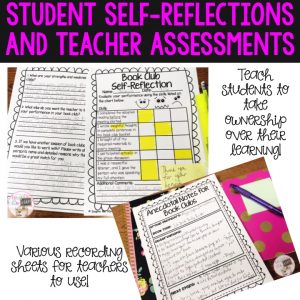
Also included in this unit:
-A note to send home to parents
-Tips for teachers about implementing book clubs successfully
-Detailed rubrics for teachers and students
-Bulletin board resources, where each group can post their group name, picture, assignment, and other important information
This Book Club Resource is also part of my Reading Workshop BUNDLE
Click HERE to purchase Book Clubs on Teachers Pay Teachers.
Save 10% by purchasing directly from my website.





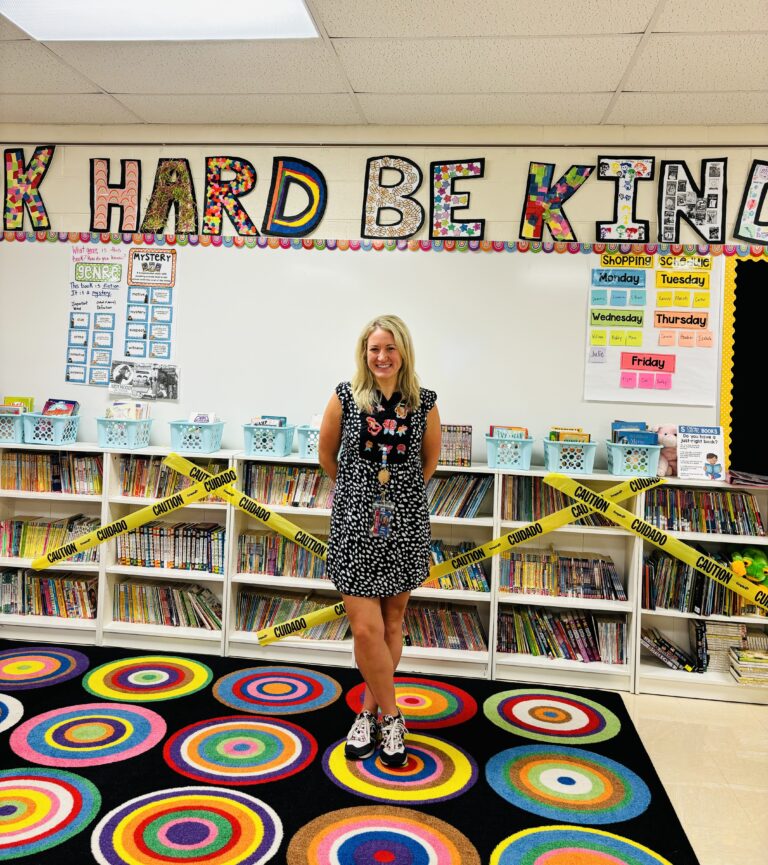



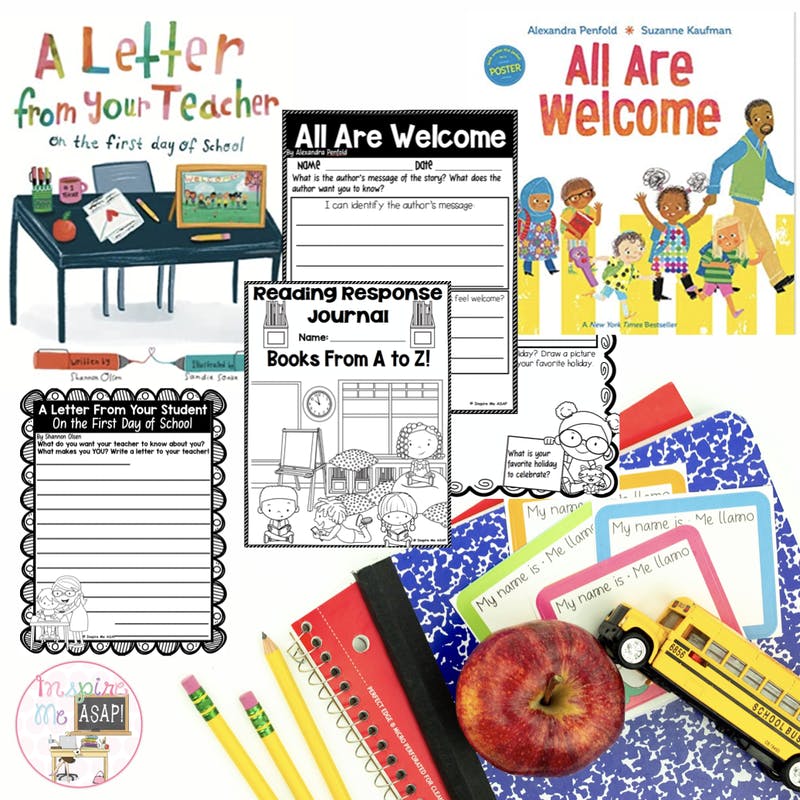
2 Responses
Thanks for the detailed information! I am looking forward to implementing book clubs with my second graders in April. I have two students who read at a J/K independently, three at L, and the rest M-R. How can I support my J/K readers while giving them choice?
Thanks again!
Hello Sara! Thanks so much for your kind words and visiting my website. You certainly have really strong readers for second grade! THey will thrive with book clubs! For your J/K readers, I would offer a few different choices (depending on availability) of beginning chapter books that they can choose from. For example, you could check out a multiple copy books of the following, which are at a J/K level:
Any books in these series: Henry and Mudge, Mr. Putty and Tabby, Amber Brown, Young Cam Jansen Mysteries, Poppleton, Arthur.
I hope this helps! Best of luck to you…as I will be implementing book clubs with my second graders right now, too! Be sure to follow me on Instagram :)